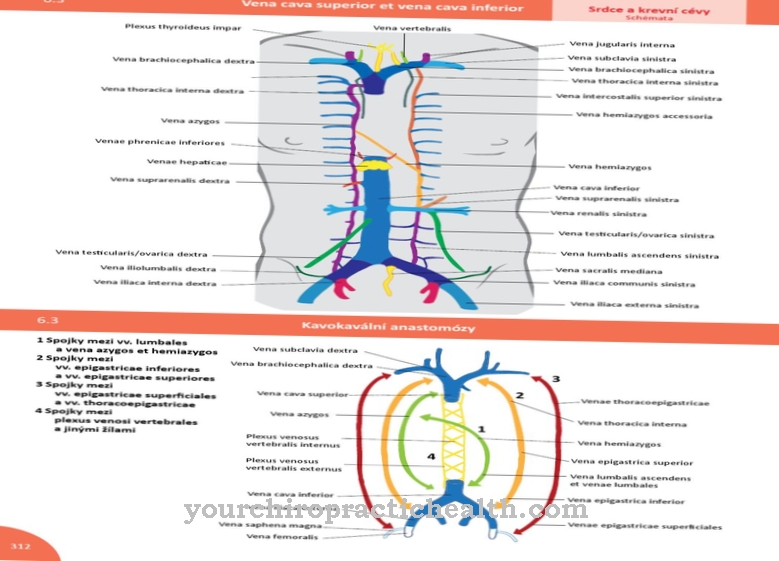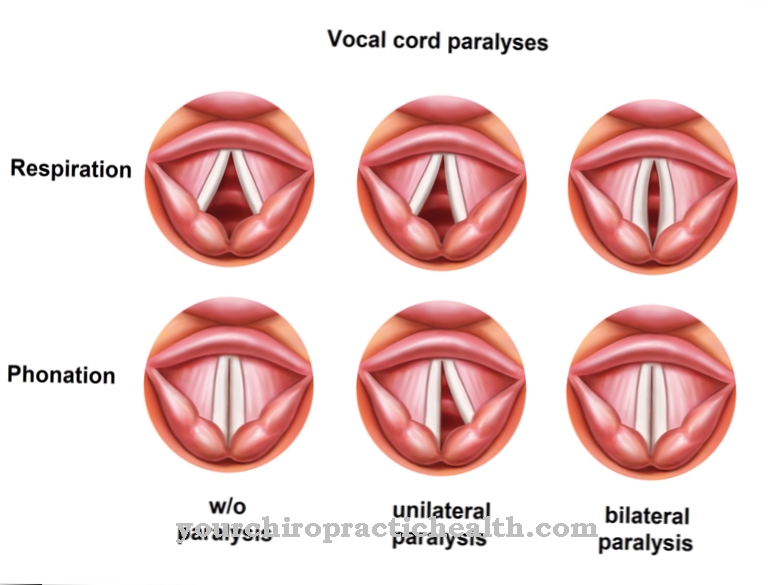Fibronectin is a glucoprotein and plays an important role in keeping body cells together or in blood clotting. It takes on many different functions in the organism, which are related to its ability to develop adhesive forces. Structural errors in the structure of fibronectin can lead to severe weakness of the connective tissue.
What is fibronectin?
Fibronectin is a glucoprotein with a molecular weight of 440 kDa (kilodaltons). It is used to develop adhesive forces between cells, between body cells and various substrates, between body cells and the intercellular matrix, and between blood platelets during blood clotting. It therefore supports wound healing, embryogenesis, hemostasis, cell adhesion during cell migration or antigen binding to phagocytes.
The primary fibronectin contains 2355 amino acids and forms 15 isoforms. It occurs both in the extracellular area and within body cells. Outside the cells it is an insoluble protein. Inside the cell plasma it is a soluble protein. All fibronectin forms are coded by the same FN1 gene. The soluble fibronectin contains two isomeric protein chains that are linked by a disulfide bridge. In the case of insoluble fibronectin, these molecules are again connected to one another via disulfide bridges to form a fibril-like structure.
Anatomy & structure
In its basic structure, fibronectin is a heterodimer made up of two rod-like protein chains. These are linked by a disulfide bridge. The isomeric protein chains are expressed by the same gene, the FN1 gene. The different base sequence results from alternative splicing of this gene. Each gene contains exons and introns. Exons are sections that are translated into the protein structure. In contrast, introns are inactive gene segments. With alternative splicing, the sequence of the base pairs remains the same, but exons and introns are found on different gene segments. When translating the genetic information, the legible exons are merged and the introns are cut out. This alternative translation of the same genetic information enables the formation of several isomeric protein chains from the same gene.
Fibronectin, made up of two isomeric protein chains, is soluble, is formed in the liver and enters the blood plasma. There it is responsible for the coagulation of blood as part of wound healing and tissue regeneration. The insoluble fibronectin is produced in the macrophages, endothelial cells or fibroblasts. It contains the same basic structure. Here, however, the individual fibronectin molecules are in turn connected to one another by disulfide bridges to form fibrillar protein structures that hold the cells together.
The ability to develop adhesive forces is due to the frequently occurring amino acid sequence arginine – glycine – aspartate. This leads to the adhesion of fibronectin to so-called integrins (adhesion receptors on the surface of the cells). The protein chains of fibronectin are made up of many domains which contain 40 to 90 amino acids. Due to the homology of the domains, the fibronectin polypeptide chains are divided into the three structural types I, II and III.
Function & tasks
Fibronectin generally serves to hold certain structural units together. These include the cells, the extracellular matrix, certain substrates or even blood platelets. Fibronectin used to be called Cell glue designated. It ensures that the cells in the tissues stay together and do not drift apart.
It also plays a major role in cell migration. Even the docking of macrophages with antigens is mediated by fibronectin. Furthermore, fibronectin controls many processes of embryogenesis and cell differentiation.
However, fibronectin is often reduced in malignant tumors. This enables the tumor to grow into the tissue and form metastases by splitting off tumor cells.
The soluble fibronectin in the blood plasma enables blood clots to form to close bleeding wounds. The individual blood platelets are glued together through the formation of fibrin. As an opsonin, fibronectin binds to the surface of macrophages as receptors. With the help of these receptors, the macrophages can bind and absorb certain disease-causing particles. In the extracellular space, insoluble fibronectin is responsible for the formation of a matrix that fixes the cells.
Diseases
Deficiency or structural abnormalities in fibronectin often have serious health effects. As a result of cancer growth within the tumor, the fibronectin concentration drops. The cell structure in the tumor loosens and the cells move apart. This leads to the frequent metastases due to the splitting off of tumor cells and their migration through the lymphatic system or blood plasma to other parts of the body. In addition, due to the lack of fibronectin, the cancer cells can grow into the neighboring tissue more quickly and thus displace it.
Furthermore, there are hereditary diseases which lead to a defect in the connective tissue. One example is Ehlers-Danlos syndrome. The Ehlers-Danlos syndrome is not a uniform disease, but rather represents a complex of connective tissue defects. Type X is caused by missing or defective fibronectin. It is a mutation in the FN1 gene. This leads to a drastic weakness of the connective tissue. The condition is inherited as an autosomal recessive trait. It manifests itself in a very sagging skin and overmobility of the joints. Despite great differences in the cause of the weak connective tissue, the symptoms of the individual diseases of this complex are similar. According to the Danish dermatologist Edvard Ehlers and the French dermatologist Henri-Alexandre Danlos, the cardinal symptoms of the Ehlers-Danlos syndrome are the severe overstretchability and tearability of the skin.
Finally, a certain mutation in the FN1 gene can also lead to glomerulopathy (diseases of the kidney corpuscles). This is a serious kidney disease that often requires dialysis treatment.













.jpg)

.jpg)
.jpg)











.jpg)